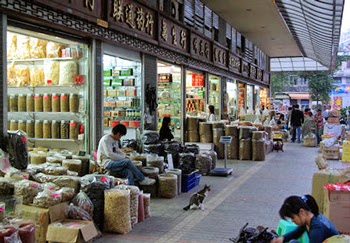< 1. Bronze ware, the
6th century B.C. >
I look at the medical
art of China in the first millennium B.C.
This time, I survey
Chinese medical art of those days.
紀元前1千年紀頃の中国の医術を見ます。
今回は、当時の中国医学を概観します。
< 2. Terracotta Army
in Mausoleum of
the First Qin Emperor, the 3rd century B.C. >
The Chinese civilization
began from a large number of city-states that was born in the Yellow River
middle region.
The oldest dynasty is
"Xia" in about 2070 B.C.
In the wake of the large
conflict of “ Chun qiu Zhan guo shi dai”(770B.C.~221B.C.), Qin Dynasty
accomplished first unification, then Han Dynasty (202B.C.~220A.D.) took it.
From these days, China
was the supreme ruler of East Asia and was the most advanced civilized country.
中国文明は黄河中流域に誕生した多数の都市国家から始まりました。
最古の王朝は紀元前2070年頃の「夏」です。
春秋戦国時代(前770~前221年)の大争乱の果てに、秦帝国が統一を成し、それを漢(前202~後220年)が奪った。
この頃から、中国は東アジアの覇者であり、先進文明国であった。
< 3. Chinese
drama "Confucius" >
For us, China was a
great teacher and a cultural superpower that had abundant classics.
Although the birth of a
character would be in about the 16th century B.C., it became popular for
writing to a strip of wood card and a silk cloth.
The contents became various from about
the 8th century, and it were written about a myth, poetry, the history,
accounts of war, the thought, and the medical art.
Such as Confucius, the thinker's birth
that began from about the 6th century B.C. became a landmark event of culture.
我々にとって中国は偉大な師匠であり、豊富な古典を有する文化大国でした。
文字の誕生は前16世紀頃ですが、普及したのは木の札や絹布に書かれるようになってからです。
その内容は前8世紀頃から多様になり、神話、詩歌、歴史、戦記、思想、医術も著された。
前6世紀頃から始まった、孔子などの諸子百家と呼ばれる思想家の誕生が文化の画期となった。
< 4. Chinese medicine drugstore street in Guangzhou >
The old medical art of China is called
Chinese medicine and is contributing by the drug and health management method
still today.
It includes Chinese herb, massage, and a
food therapy meaning that foods are medicines.
And especially acupuncture, moxa
cautery, and a therapy by life energy are peculiar.
The medical art of China
was tied to much God and black art in the first stage in common with other
civilization.
中国の医術は漢方と呼ばれ、現在でも薬剤や健康法で貢献しています。
それには漢方薬、医食同源、按摩などがあり、特に鍼、灸、気は独特なものです。
中国の医術も他の文明と同様に初期は多くの神や呪術と結びついていました。
この特徴は、大陸の端にあって他文明から隔絶し、広大な地域に多数の民族がいたことにあるのでしょう。
< 5. Inscriptions
on bones and tortoise carapaces, the 13 –11th century B.C. >
I introduce two stories.
“ Policymaker uses the doctor who performs fortune-telling by a tortoise
shell and bamboo sticks." (the 2nd century B.C.- the 2nd
A.D.)
“ This sickness cannot get cured. The moxa cautery does not
work because that it is located at the lower side of your heart and upper side
of your diaphragm. And the acupuncture does not reach it. Medicines also do not
work additionally.” (About the 4th century B.C. time)
The former shows that
they depended on treatment of witch doctor performing a fortune-telling and a prayer.
The latter shows that
famous physician in ordinary to King of Qin was
invited to Jin, and he diagnosed the King of Jin.
In those times, there
was a doctor who won fame by medicine.
He had known three kinds
of cures and diagnosed for medical problem.
I look at how the empirical science-like
medical art including the magical factor has changed, from the first millennium
B.C. to the 3rd century A.D.
二つの話を紹介します。
「為政者、亀甲と筮竹(ぜいちく)による占いをたのみ、好みて巫医(ふい)を用いる。」(管子より、紀元前後に集成)
「この病気は治療できない、横隔膜の上、心臓下部の下は灸治もできず、刺鍼も届かず、さらに、薬も効きません。」(左伝より、紀元前4世紀頃に集成)
前者は、占いや祈祷を行う巫(みこ)の治療に頼っていたことを示す。
後者は、前6世紀末、有名な秦王の侍医・医爰(イエン)が晋に招かれて王を診断し、既に手遅れと述べたところです。
この時、王は自ら病が絶望的であると指摘されたにもかかわらず、その診断の確かさを褒めた。
この時代、医術で名声を博した医者がおり、内科的な病に対して診断を行い、3種類の治療法を有していたことがわかる。
このように呪術と経験科学的な医術が、紀元前1千年から紀元3世紀頃までにどのように変化していったかを見ます。

























